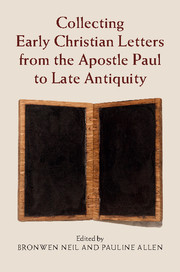Book contents
- Collecting Early Christian LettersFrom the Apostle Paul to Late Antiquity
- Collecting Early Christian Letters
- Copyright page
- Contents
- Figures and tables
- Contributors
- Acknowledgements
- Abbreviations
- Part I Introducing early Christian letters
- Part II Collecting New Testament and early monastic letters
- Part III Collecting early bishops’ letters
- Part IV Collecting early papal letters
- Bibliography
- Index of people, places and things
- Index of biblical citations
- References
Bibliography
Published online by Cambridge University Press: 05 February 2015
- Collecting Early Christian LettersFrom the Apostle Paul to Late Antiquity
- Collecting Early Christian Letters
- Copyright page
- Contents
- Figures and tables
- Contributors
- Acknowledgements
- Abbreviations
- Part I Introducing early Christian letters
- Part II Collecting New Testament and early monastic letters
- Part III Collecting early bishops’ letters
- Part IV Collecting early papal letters
- Bibliography
- Index of people, places and things
- Index of biblical citations
- References
- Type
- Chapter
- Information
- Collecting Early Christian LettersFrom the Apostle Paul to Late Antiquity, pp. 221 - 250Publisher: Cambridge University PressPrint publication year: 2015



